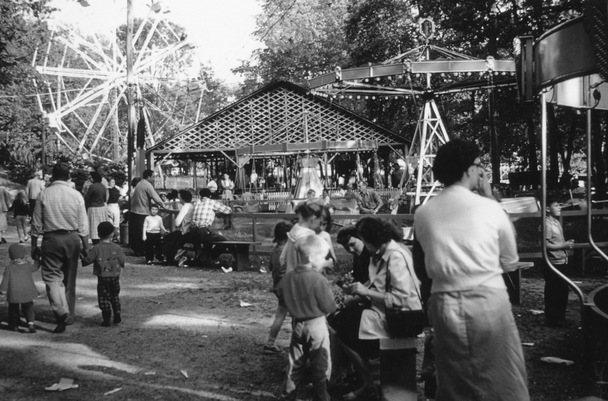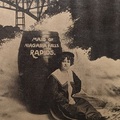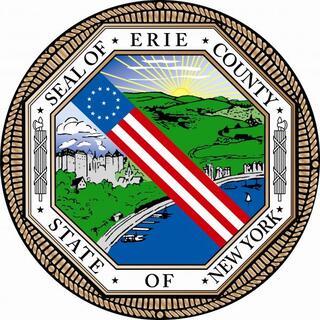
The boulders that lay in the creekbed and the banks of the creek proved to be obstacles for Phil Morrot when he began to clear the land. He decided to make the rocks an attraction and named the park “Boulder Park” because of them.
Town of Pembroke Historian
As the weather improves and longer days allow for more time outside, our thoughts turn to the things we enjoy about the warm weather. And some things remain the same: People love to ride the Ferris wheel or see carousels spinning. Today, Western New Yorkers visit Darien Lake, Martin’s Fantasy Island and Seabreeze Amusement Park for summer fun. These large parks dominate the area, but in the early-mid- 20th century, Western New York had many smaller amusement parks.
One such park was New Rialto in Olcott, on the shores of Lake Ontario. By 1940, manager Theophilus “Phil” Morrot, operated many of the rides himself, especially the carousel. When Morrot’s offer to buy New Rialto was refused, he decided to purchase land in Indian Falls, along Tonawanda Creek, to start his own amusement park.
Eight years later, on May 28, 1949, his 14-acre Boulder Park opened. It boasted a Ferris wheel and several kiddie rides, but the main attraction was the carousel he had moved from New Rialto. Designed by Morrot’s sister, Emily Bourgard, and built in the fall of 1919 by the Allan Herschell Company, it featured standard Herschell figures, elaborately carved and very realistic. The carousel had 32 horses and seven unique animals, including an elephant and a polar bear – the first in America to include both animals. [For more, see “Allan Herschell: King of the Carousel” in the Spring 2014 issue of Western New York Heritage. Copies still available.]
Over 1,000 electronic light bulbs on the carousel’s cornice reflected off the mirrored panels that alternated with original oil paintings of local landscapes. The Wurlitzer-style military band organ could be heard in Indian Falls and down the creek.
Other unique rides included the Boulder Park Miniature Steam Train. Built in 1949 by Sam Herrington, a New York Central Railroad employee, the miniature train was true to the full-size prototype and traveled alongside the creek. Its shrill whistle added a sense of authenticity for riders, young and old, who happily stood in long lines to ride.
Boulder Park was truly a place for families. The magnificent carousel memorialized Phil’s sister, Emily, who died in 1930. His children worked at the park spinning cotton candy, taking tickets and serving hot dogs and ice cream. The beautiful landscape and affordable admission (all rides were only five cents) attracted families from all over the area each summer.
The bliss, however, didn’t last. In 1964, Phil Morrot sold the park and retired. Under new ownership, Boulder Park lost its charm and slowly deteriorated. After over 20 years of operation, it officially closed in 1970. There was some initial hope that the park would be reopened by Morrot’s son and daughter, who lived out of state. But when they arrived in Indian Falls, they discovered the Wurlitzer organ had been stolen. That, coupled with high taxes and the challenges of long-distance operation kept Boulder Park’s doors closed, and visitors never entered the park again. The famous carousel animals were later removed and auctioned off individually, with the polar bear selling for $121,000 in 1989.
Though lacking a 200-foot roller coaster or water park, Boulder Park kept visitors happy and entertained. Although the park is no longer open and continues to fall into disrepair, people still look back at the summers spent there with fond memories.









